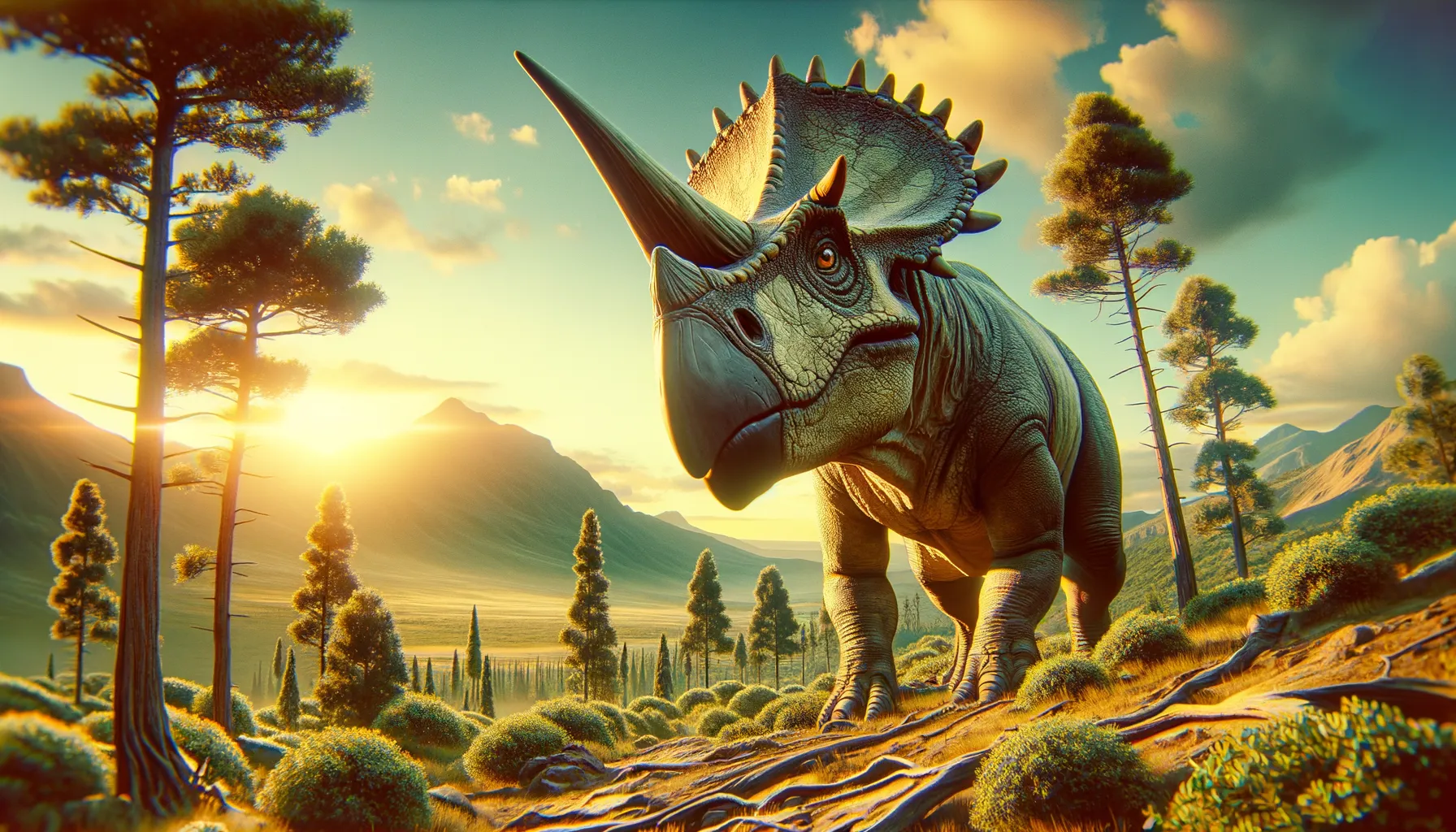
Ceratops
The horned giant of the ancient prairies.
Period
Cretaceous
Length
Around 25 to 30 feet long.
Height
Up to 10 feet tall at the shoulders.
Weight
Approximately 5 to 10 tons.
Ceratops was a large, herbivorous dinosaur known for its prominent frill and horns. It roamed the Earth during the late Cretaceous period. This impressive animal had a rhinoceros-like body with a parrot-like beak, which it used to crop vegetation. Its unique cranial features made it one of the most recognizable dinosaurs, and it played a significant role in its ecosystem.
Diet
Ceratops was a herbivore that mainly fed on shrubs. Its strong beak was well-suited for cutting through tough plant material. It likely consumed a range of vegetation, including cycads and ferns.
Hunting
As a herbivore, Ceratops did not hunt other animals. It relied heavily on its beak and strong jaws to gather food. Its large size offered protection against predators rather than aiding in hunting.
Environmental challenges
Ceratops faced environmental challenges such as climate fluctuations, which affected vegetation growth and availability. It had to adapt to seasonal changes in its habitat to ensure a constant food supply. Predation from large theropods was also a significant threat, requiring efficient defense mechanisms.
Speed
Relatively slow due to its bulky build.
Lifespan
Estimated around 70 to 80 years.
First discovery
Discovered in the late 19th century in North America.
Fun Facts
- Ceratops means 'horned face' and is a reference to the prominent horns on their heads.
- These dinosaurs lived around 70 million years ago during the late Cretaceous period.
- Ceratops had large frills at the back of their heads, which may have been used for defense or attracting mates.
- They were herbivores, feeding on plants and possibly using their beaks to bite through tough vegetation.
- Ceratops traveled in herds, which provided safety in numbers from predators.
- Despite their fearsome appearance, they were prey for large carnivorous dinosaurs like Tyrannosaurus rex.
- Ceratops were relatively large dinosaurs, with some species weighing over five tons.
Growth and Development
Ceratops hatched from eggs and likely experienced rapid growth in its early years, reaching near full size quickly. It developed its prominent horns and frill as it matured, which played a role in both defense and social interactions. The development of these features was crucial for its survival.
Habitat
Ceratops lived in lush, forested regions with abundant plant life, suitable for its herbivorous diet. Its habitat included open plains and areas near water sources where various vegetation types thrived. The diverse plant life supported large herbivore populations, aiding their survival.
Interaction with other species
Ceratops likely coexisted with various other dinosaur species, both herbivores, and predators. Its horns and frill offered protection from potential predators like tyrannosaurs. Social species often formed herds, which provided mutual support and defense.
Natural lifespan
In their natural environment, they could live up to 80 years.
Reproduction
Ceratops reproduced by laying eggs, and nesting sites were likely guarded by adults. The placement and number of eggs suggest a strategy focused on large clutch sizes to ensure some offspring reached maturity. Parental care might have included protecting the young from predators.
Social behaviour
Ceratops were probably social animals, moving in herds that provided safety and social structure. These groups enabled them to effectively graze and watch for predators. Ritualistic behaviors related to mating and social ranking were likely performed using their horns and frills.
Fossil locations
Fossil remains of Ceratops have been predominantly found in North America, specifically in regions like Montana and Alberta. These locations are key for understanding their distribution and environmental conditions. Fossil sites have provided valuable insights into their biology and interactions with other fauna.
